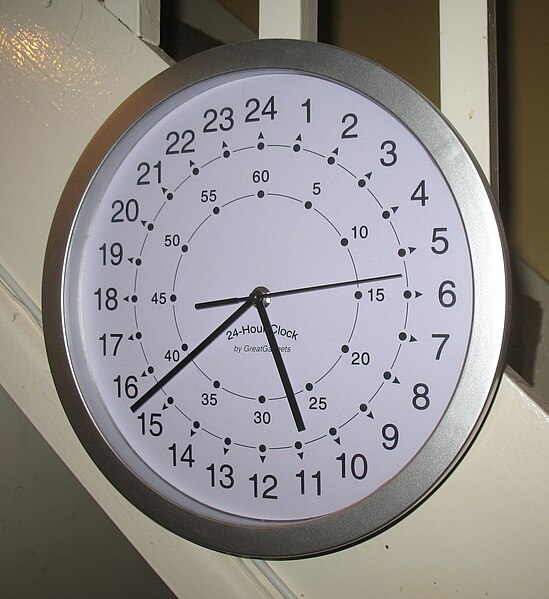A graduation is a marking used to indicate points on a visual scale, which can be present on a container, a measuring device, or the axes of a line plot, usually one of many along a line or curve, each in the form of short line segments perpendicular to the line or curve. Often, some of these line segments are longer and marked with a numeral, such as every fifth or tenth graduation. The scale itself can be linear or nonlinear.
A slide rule. This is an example of a mathematical instrument with graduated logarithmic and log-log scales.
A half circle protractor graduated in degrees (180°).
A clock face is the part of an analog clock that displays time through the use of a flat dial with reference marks, and revolving pointers turning on concentric shafts at the center, called hands. In its most basic, globally recognized form, the periphery of the dial is numbered 1 through 12 indicating the hours in a 12-hour cycle, and a short hour hand makes two revolutions in a day. A long minute hand makes one revolution every hour. The face may also include a second hand, which makes one revolution per minute. The term is less commonly used for the time display on digital clocks and watches.
A wall clock showing the time at 10:09
15th-century rotating dial clock face, St. Mary's Church, Gdańsk, Poland
French decimal clock (with the 24 standard hours included around the outside)
A modern quartz clock with a 24-hour face






